While change is expected over an artist’s career, shifts in David Muench’s photographic techniques happened slowly. He reserved his right to experiment with different formats and compositions. The career timeline below documents Muench’s business throughout the years. It includes his more prominent publications, exhibits that featured his work, and notable changes in cameras and film use.
Before the Camera
June 25, 1936
David Muench was almost destined to become a photographer. His father, Josef Muench, was a prominent landscape photographer who took his family along on his trips of the American Southwest. David often reflected fondly on his childhood explorations of the Sierra Nevada mountains and Glen Canyon pre-dam. David’s first camera was a gift from his father, sparking a lifelong passion for landscape photography.
The Black and White Era
January 1, 1950
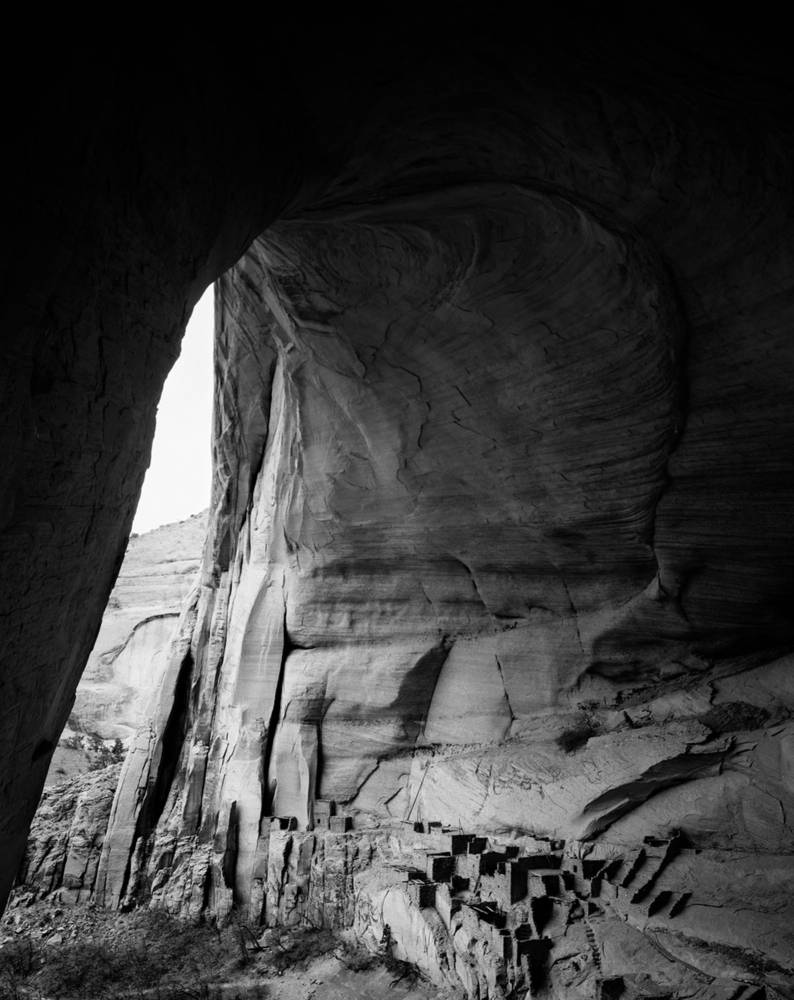
In Muench’s early black-and-white work, his focus on punchy contrast is abundantly clear. He had barely started to practice photography, and yet his voice was present and loud. Of this era, David Muench commented in a 2021 oral history interview, “I always like contrast, and… especially in the early days, [I] was overly contrasty in my response to things.” However, as Muench’s career progressed, his emphasis on contrast never faltered; instead, he increasingly balanced high contrast with other formal elements in his pictures.
First Published Image
January 3, 1955
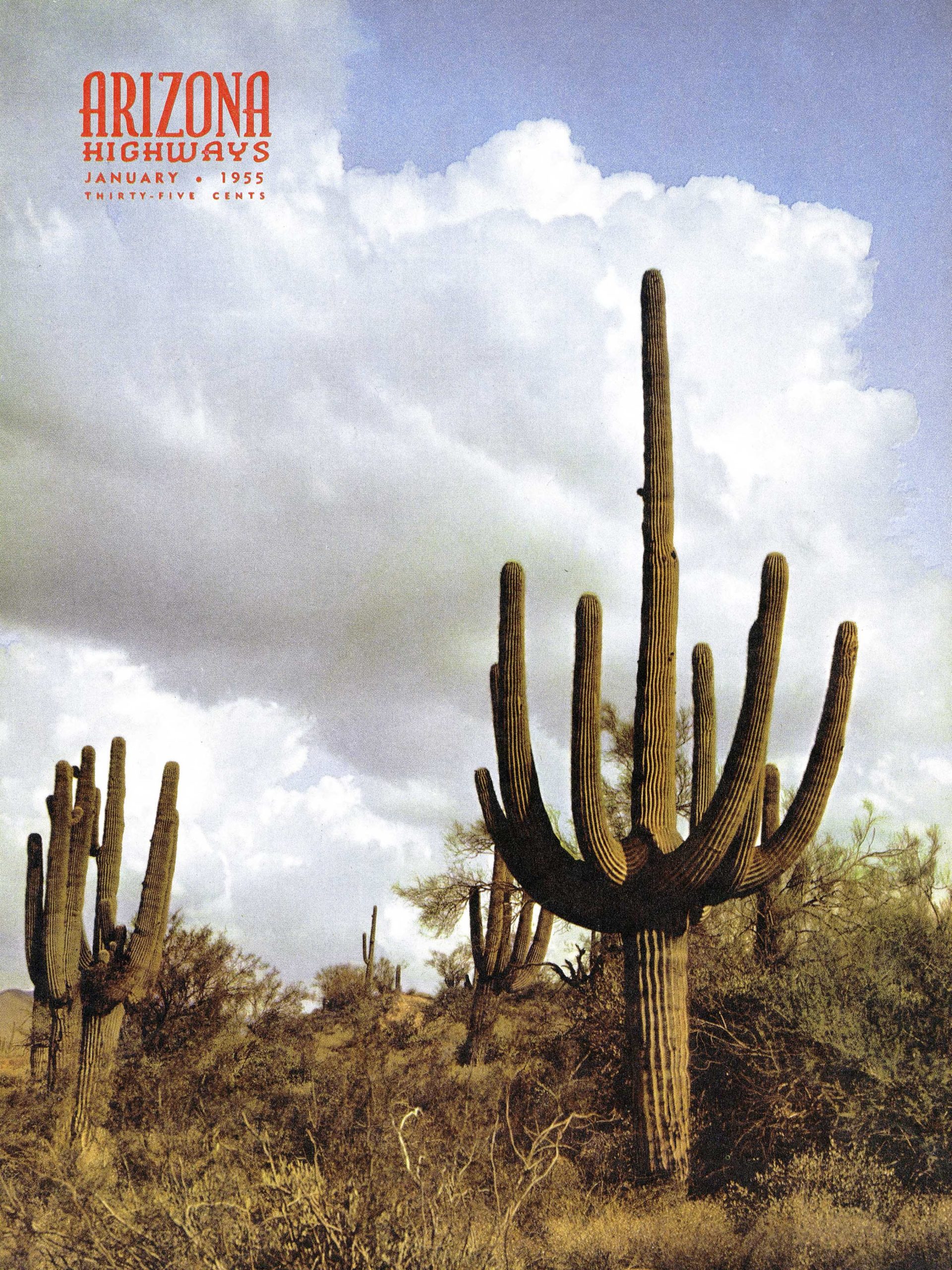
David Muench was only 18 years old when his photograph “Saguaros” was published on the front cover for Arizona Highways January 1955 issue. The image caption inside the magazine’s front cover read, “David is the son of one of our favorite contributors, Josef Muench. We are proud to welcome him to our pages for the first time this issue.” Muench took “Saguaros” with a Speed Graphic camera using Ektachrome film, with an exposure of 1/10 second at an aperture of f.22.
Formal Education
May 20, 1957

David Muench attended the Rochester Institute of Technology in Rochester, New York (1955-1957), the Art Center School of Design in Pasadena, California (1958-1960), and the University of California, Santa Barbara. Through his formal education, Muench acquired the building blocks that allowed him to go out into the wild and respond intuitively to the landscape. Most of his work from this era is wildly different from the subject matter he ended up pursuing later in his career.
The Transition to Color
April 4, 1960
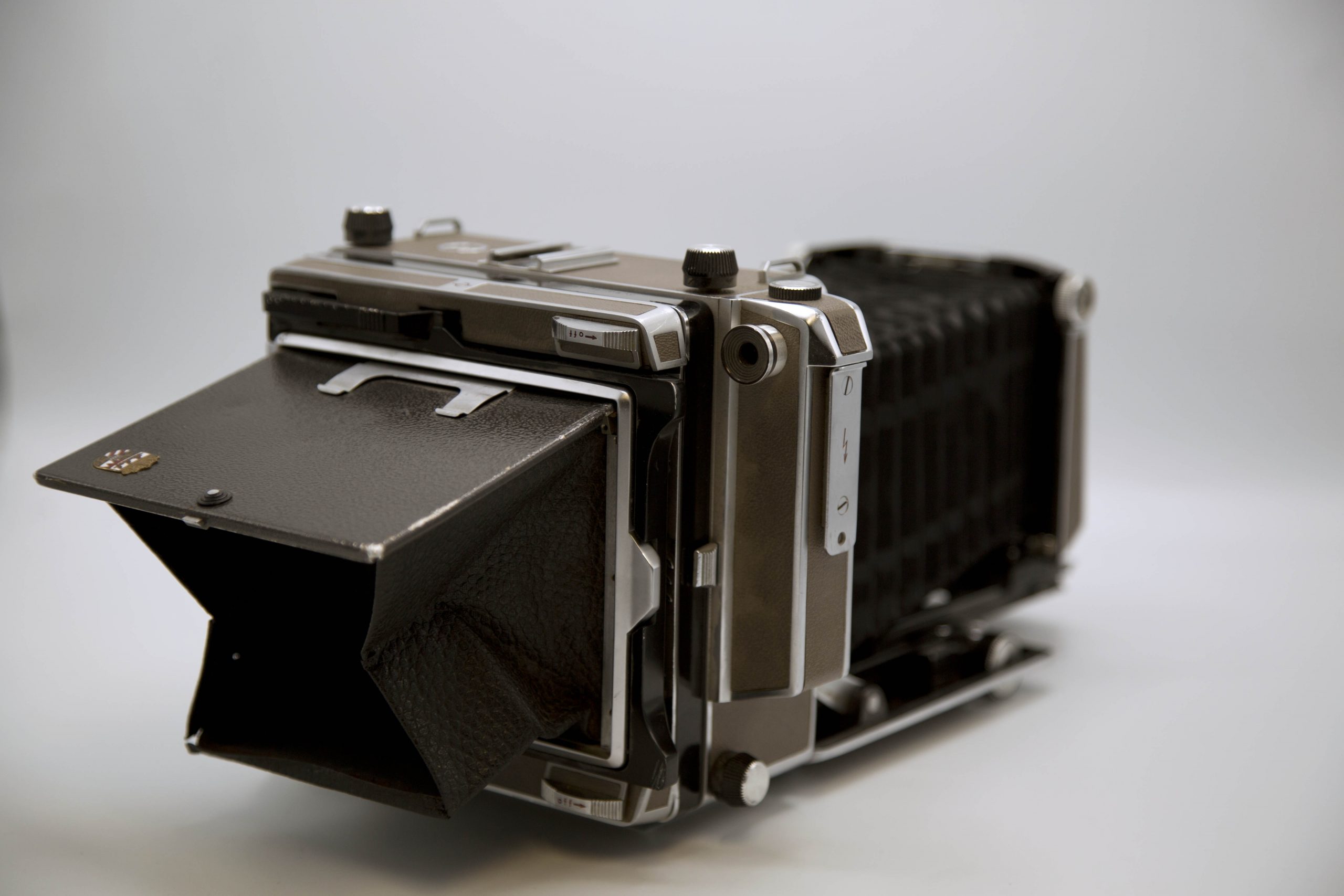
David Muench pivoted to color photography in the early 1960s, beginning to allow contrast to interact with color relationships. While he still printed in black-and-white, a number of his black-and-white images were created from color transparencies. He started to get his footing as a commercial photographer by submitting his images to magazines and other publications. Muench continued to experiment with larger format films cameras, including 8×10″ and 11×14″, before settling on the 4×5″ film format.
David Muench Photography Inc.
July 5, 1964
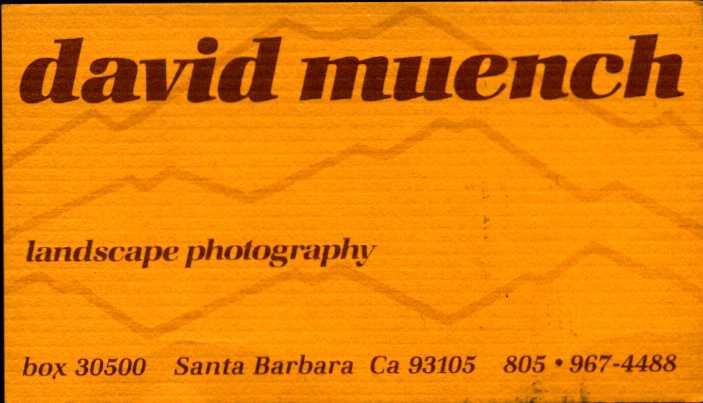
In 1964, David Muench and his wife Bonnie Nelby Muench formed David Muench Photography Inc. to manage his growing success as a landscape photographer. Bonnie handled most of the administrative and organizational work for the business, while David continued to produce images to distribute and sell. At this point, DMPI focused on selling prints through various galleries and submitting Muench’s work to publications rather than their own projects.
First Exhibit Style Book
January 11, 1970
Charles H. Belding published the first of Muench’s many state-specific books, California, in 1970. California featured text by David W. Toll and photographs by Muench and Ray Atkeson. It was printed by Graphic Arts Center in Portland, Oregon. David Muench continued to release a book every year or two throughout the 1970s, following the state trend for a while before branching into national parks and other subjects.
Lewis and Clark Exhibition
August 23, 1979
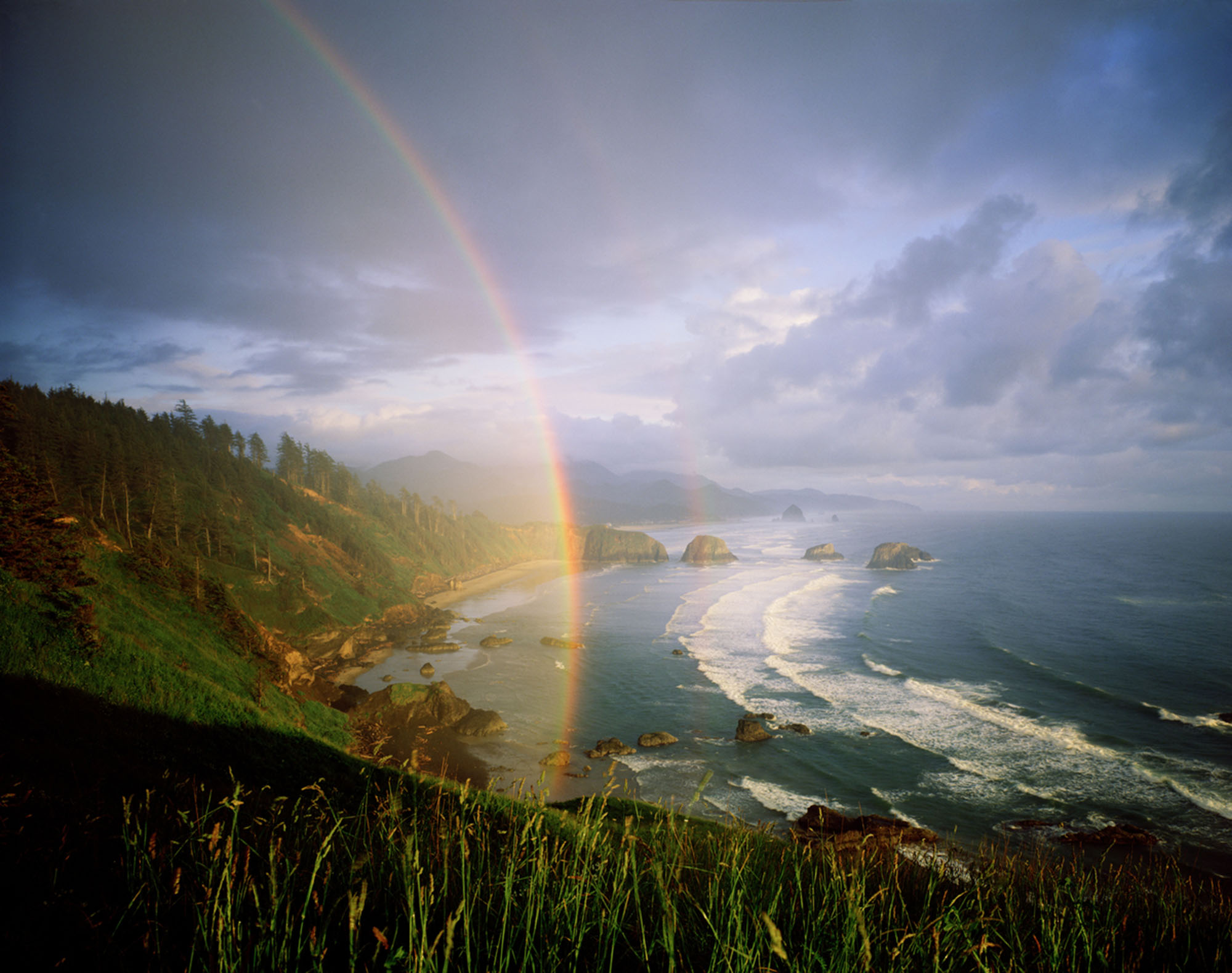
From 1972 to 1975, David Muench traced the trail of Lewis and Clark as part of a collaboration with the National Park Service (NPS). He documented the landscape along the way in preparation for display at the Museum of Westward Expansion at Gateway Arch National Park in St. Louis, Missouri. He produced 33 large photographic murals in addition to hundreds of complementary images. These murals were on permanent display from 1979 to 2015, when the museum closed for restructuring.
35mm Film & Film Scanning
January 1, 1990
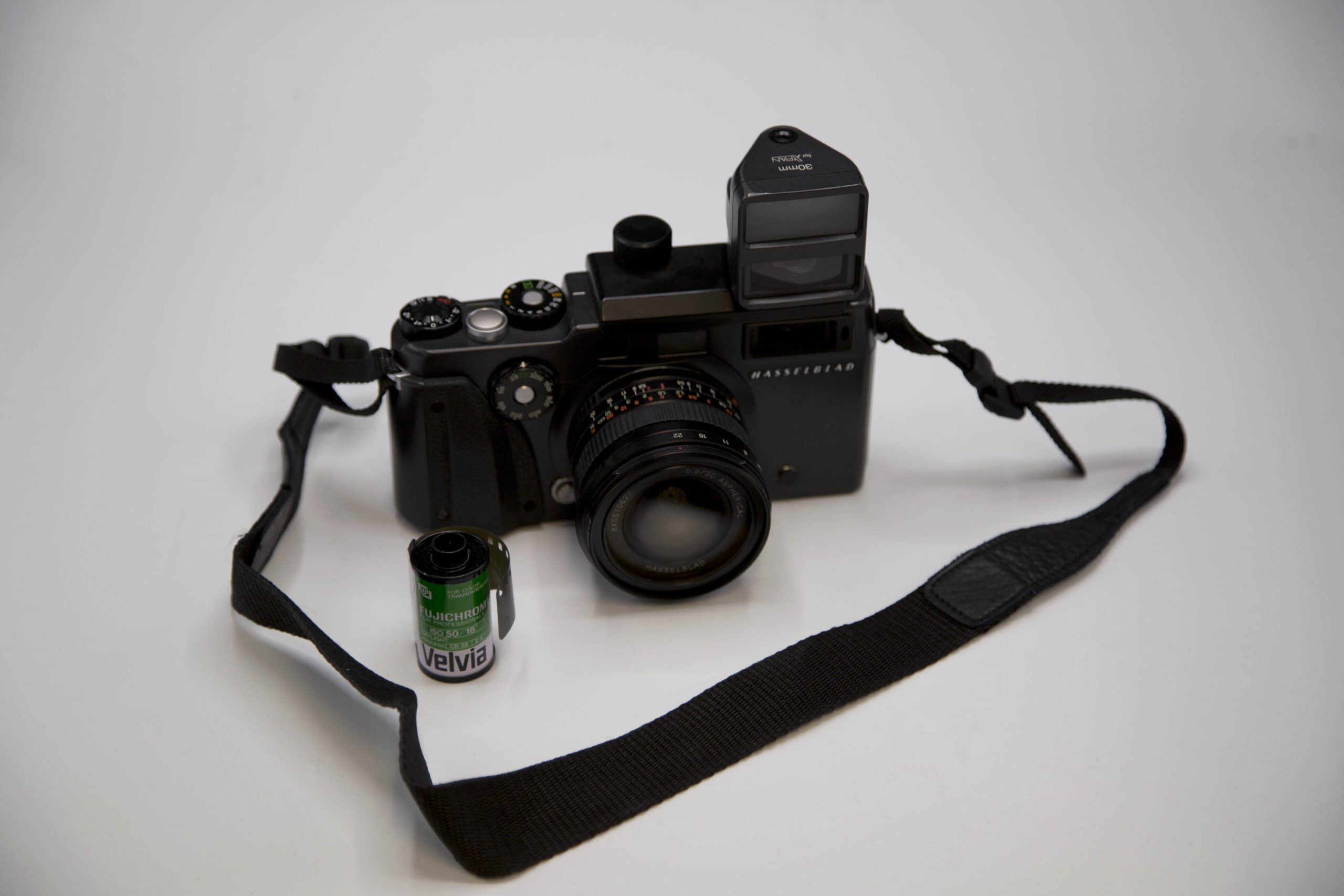
Always experimenting with his process, in the 1990s, David Muench tried out 35mm film. He ultimately preferred using the 4×5″ format but continued to use 35mm film throughout his career. Around the same time, David’s children, Zandria Belardo Muench and Marc Muench, began working to digitize Muench’s analog film in order to preserve it and to broaden the audience for his photography.
DMPI to MPI
January 8, 2000
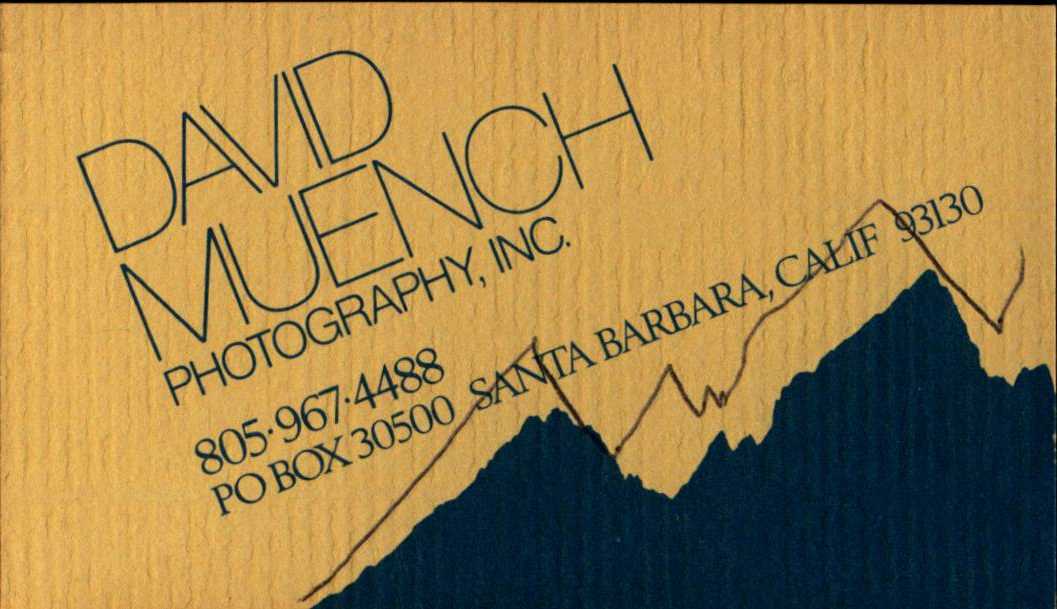
The family business expanded as David’s children, Marc Muench and Zandria Muench Beraldo, increasingly contributed to the family business as artists as well as employees. David Muench Photography Inc. (DMPI) became Muench Photography Inc. (MPI) to reflect this change in creatorship. Marc took up the work on the administrative side of MPI, while Zandria’s efforts to digitize and manage David’s film photographs continued.
Arizona Highways: Celebrating the Tradition
February 19, 2000
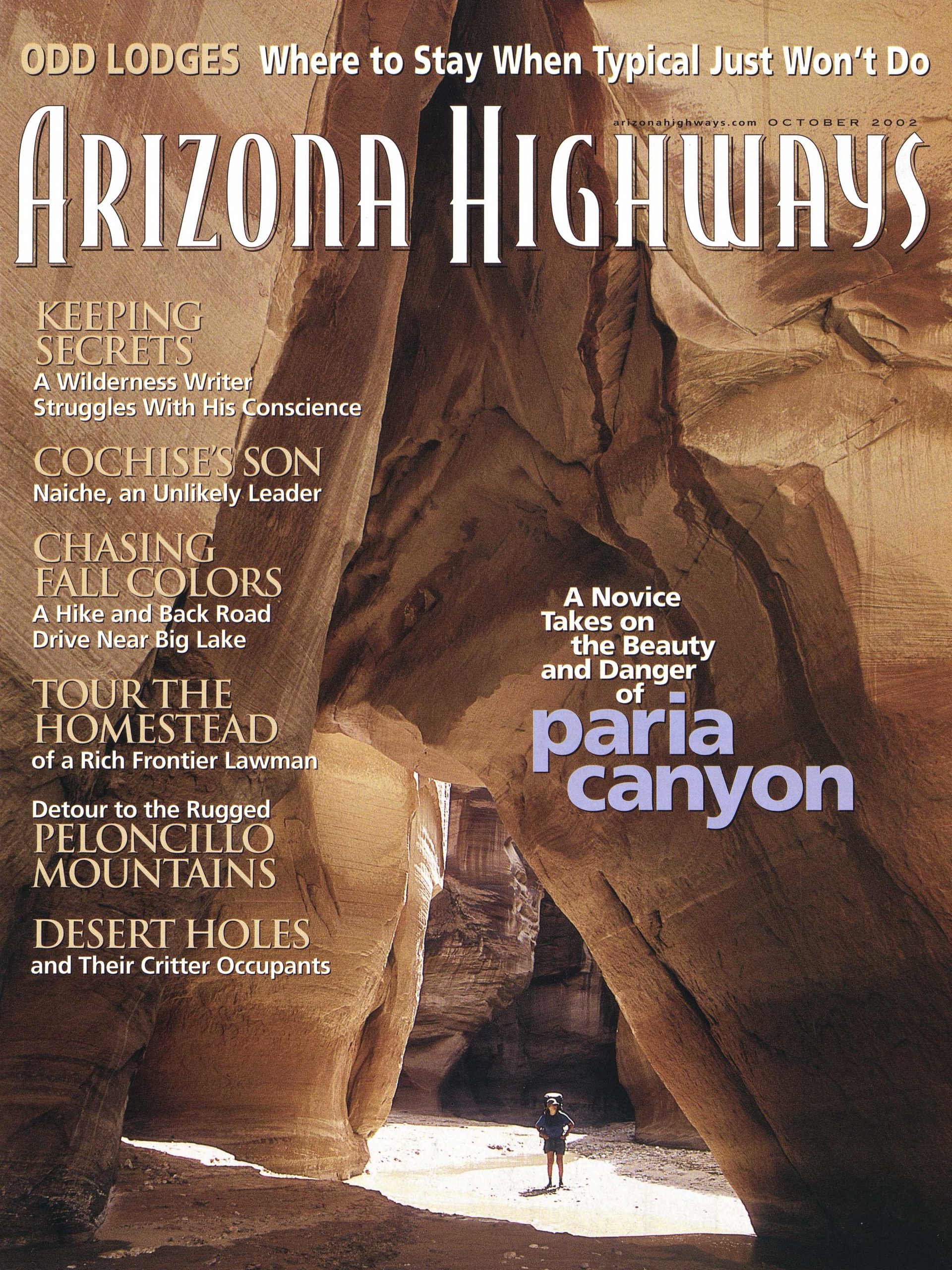
For their 75th anniversary, Arizona Highways hosted the exhibit “Arizona Highways: Celebrating the Tradition,” featuring the work of David Muench, Jack Dykinga, and Ansel Adams, all recognized landscape photographers and consistent contributors to the magazine for many decades. This exhibit opened in the Phoenix Museum of Art in 1999 before traveling to the Center for Creative Photography at the University of Arizona in Tucson and up to the Museum of Northern Arizona in Flagstaff, Arizona in 2000.
Switch to Digital Photography
June 24, 2006
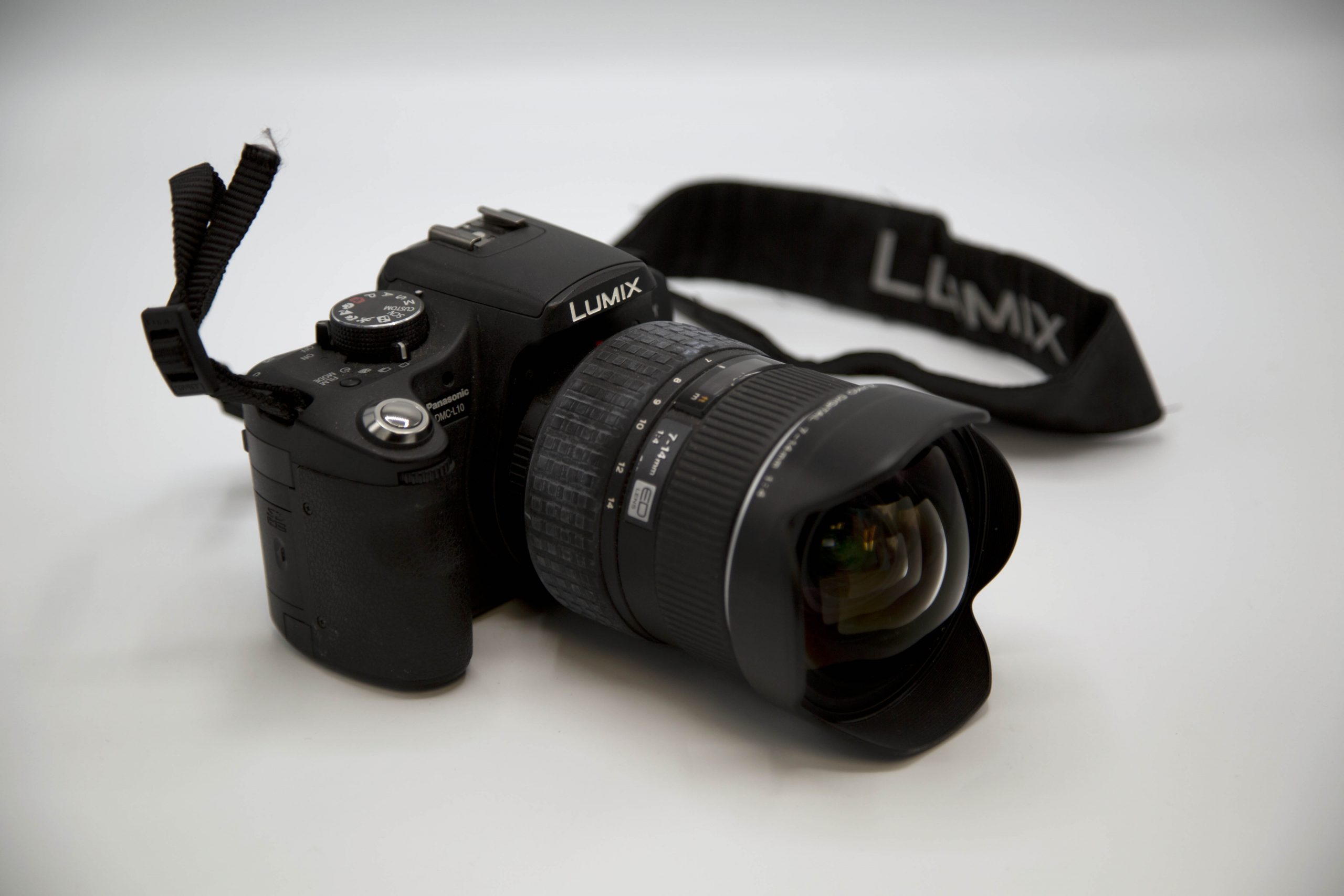
In the early 2000s, David Muench gradually switched to using a digital camera, which was relatively new technology at the time. Still preferring 4×5″ film, Muench disliked the instantaneous results from digital cameras, the lack of anticipation he felt before he knew what one of his images would look like. However, a digital camera was far more convenient for travel. Additionally, using one reduced MPI’s digitization workload for Muench’s film photographs.
Website Development
January 11, 2011
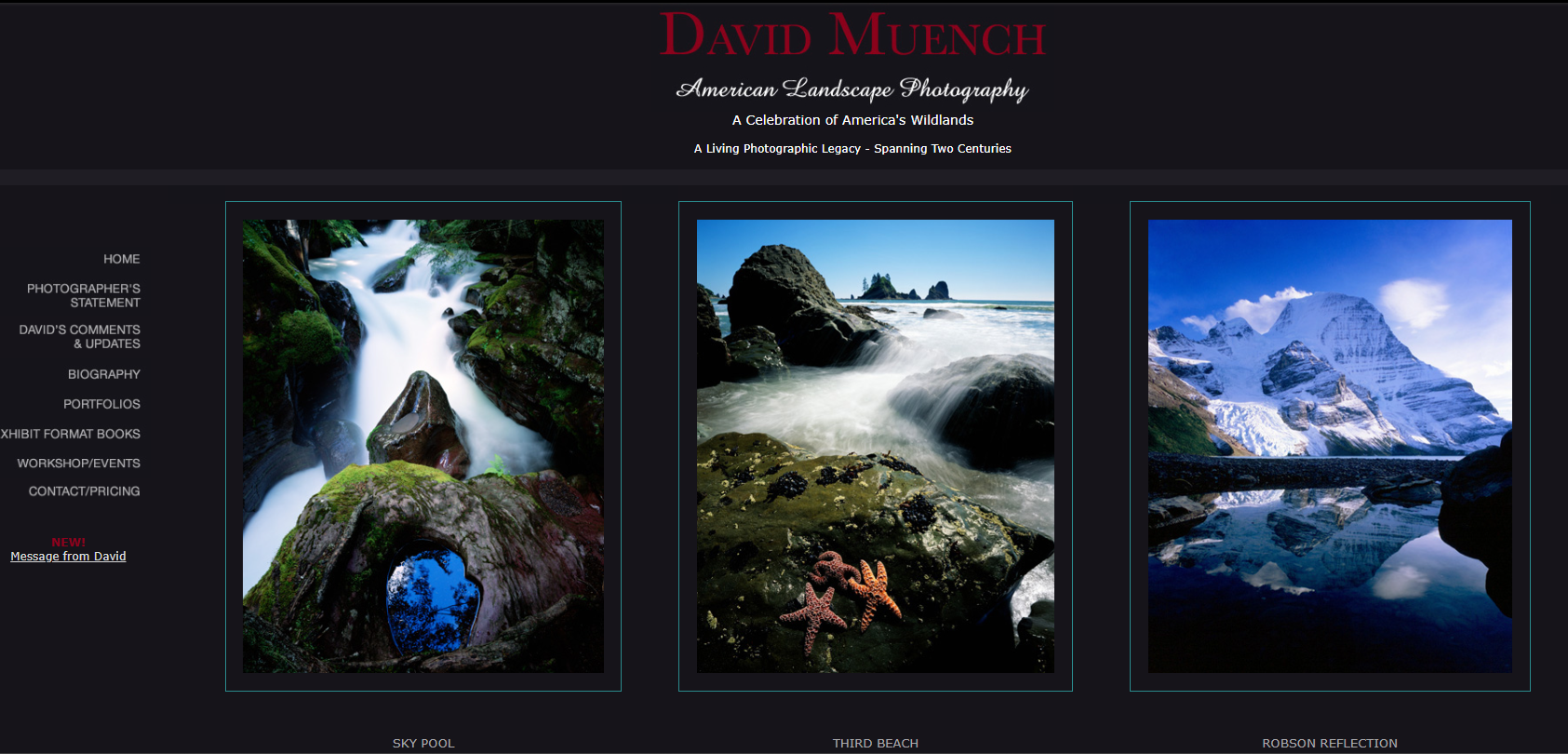
David Muench’s website, davidmuenchphotography.com, grew increasingly fundamental to organizing his ever-growing body of work in the 2010s. Muench made several versions of each of his “portfolios” of work, which he continued to tweak and edit for years. Marc primarily uploaded images and structured the website, while Zandria continued to manage, digitize, and edit Muench’s film photographs.
Photography Workshops
September 15, 2016
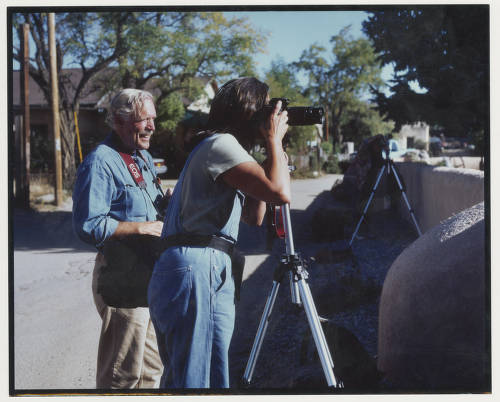
As part of the shifting roles in Muench Photography Inc., Marc and David Muench began to do instructional photography workshops across the United States (and later, around the world) beginning in 2001. By this point, Marc Muench was a prominent photographer in his own right. David Muench continued to do workshops with his son and as a solo instructor until about 2018. Depending on the nature of the workshop, he would switch between film and digital cameras for shoots.
Arizona Highways Hall of Fame
April 1, 2025
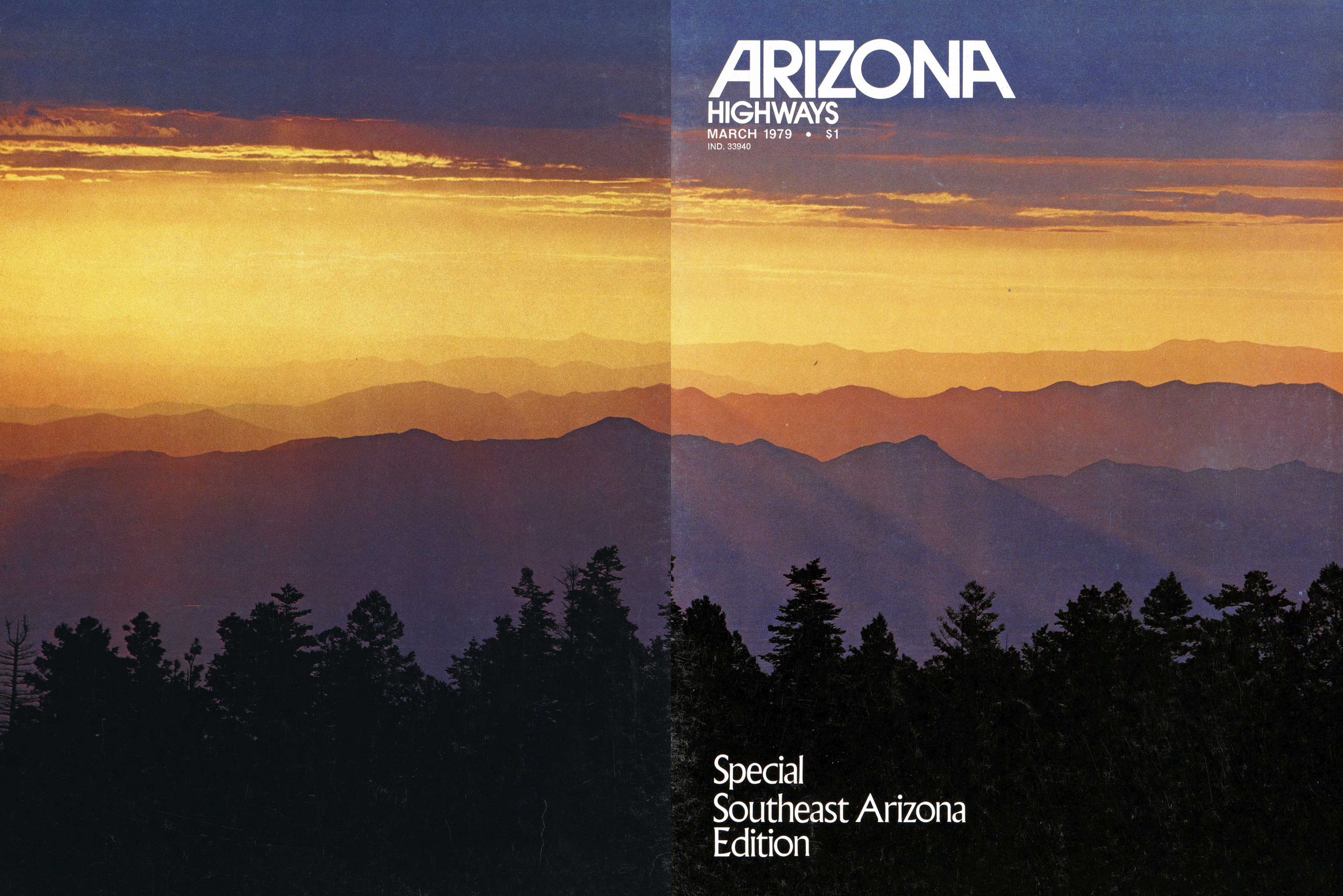
In April 2025, David Muench was invited into the Arizona Highways Hall of Fame. He was among the first people selected for inclusion, as the magazine’s editors only created the Hall of Fame in 2025. One of Muench’s images of saguaros was featured on on the cover, yet again, for their centennial issue in April 2025, titled “Arizona Highways: One Hundred Years, 1925 to 2025.”
